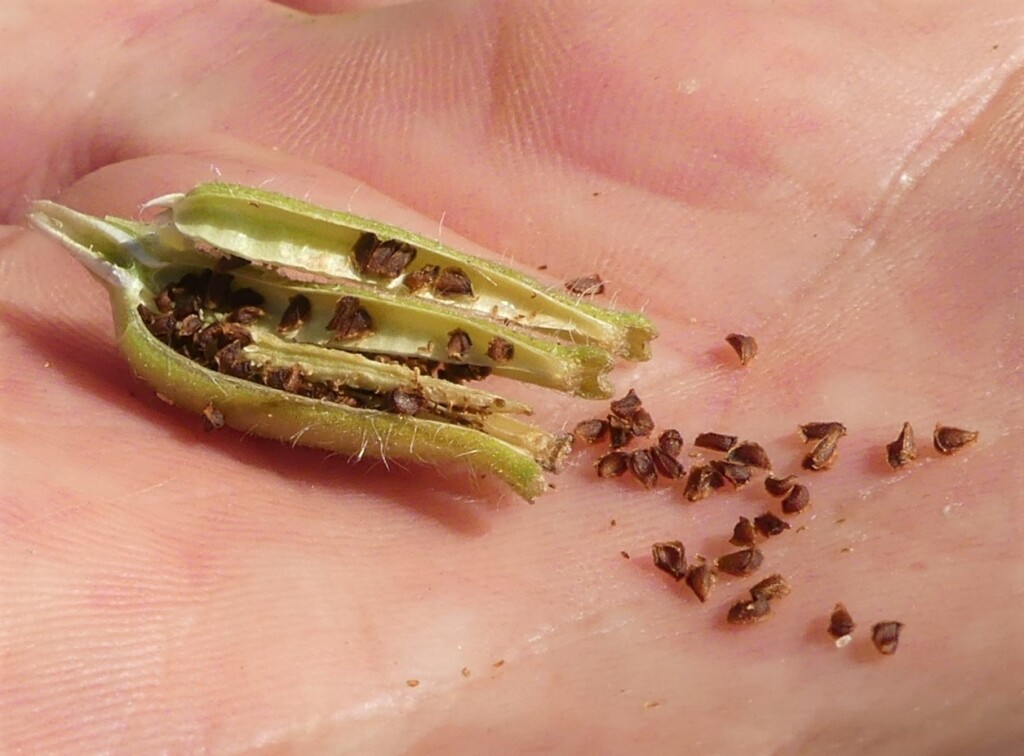Oenothera glazioviana
Micheli Reddish Evening-primroseErect, short-lived perennial or biennial herb, to 1.5 m high; stems 1–several, simple or branched, covered with many stiff hairs that are often broad and dark red at the base, upper parts with short appressed and glandular hairs. Basal leaves rosetted, lanceolate to oblanceolate, to 30 cm long, 5 cm wide, acute or obtuse, covered with short and long hairs, margins more or less entire; cauline leaves lanceolate to narrowly elliptic, to 15 cm long, 3 cm wide, acute, decreasing in size up the stem, covered with short and long hairs. Inflorescence a simple, dense spike in upper leaf axils. Flowers actinomorphic, opening near sunset and fading by morning, sessile; hypanthium 3.5–5 cm long; sepals lanceolate, 2–4.5 cm long, often reddish, failing to separate completely, bent to one side; petals 3.5–5 cm long, bright yellow, turning red on ageing. Capsule oblong but broadest toward base, 1.5–3 cm long, 4–6 mm wide, with spreading hairs, dehiscing mainly at apex. Flowers mostly Aug.–Mar.
MuM, GleP, VVP, GipP, OtP, Gold, NIS, EGL, EGU, HSF, OtR. All States except NT. Naturalised worldwide. In Victoria it has become established in several disturbed localities (mostly near towns), as a garden-escape.
Believed to be a garden hybrid between 2 North American species, possibly O. grandiflora L’Hér. and O. elata Kunth, and now widespread throughout the world.
Jeanes, J.A. (1996). Onagraceae. In: Walsh, N.G.; Entwisle, T.J., Flora of Victoria Vol. 3, Dicotyledons Winteraceae to Myrtaceae, pp. 930–942. Inkata Press, Melbourne.
 Spinning
Spinning




